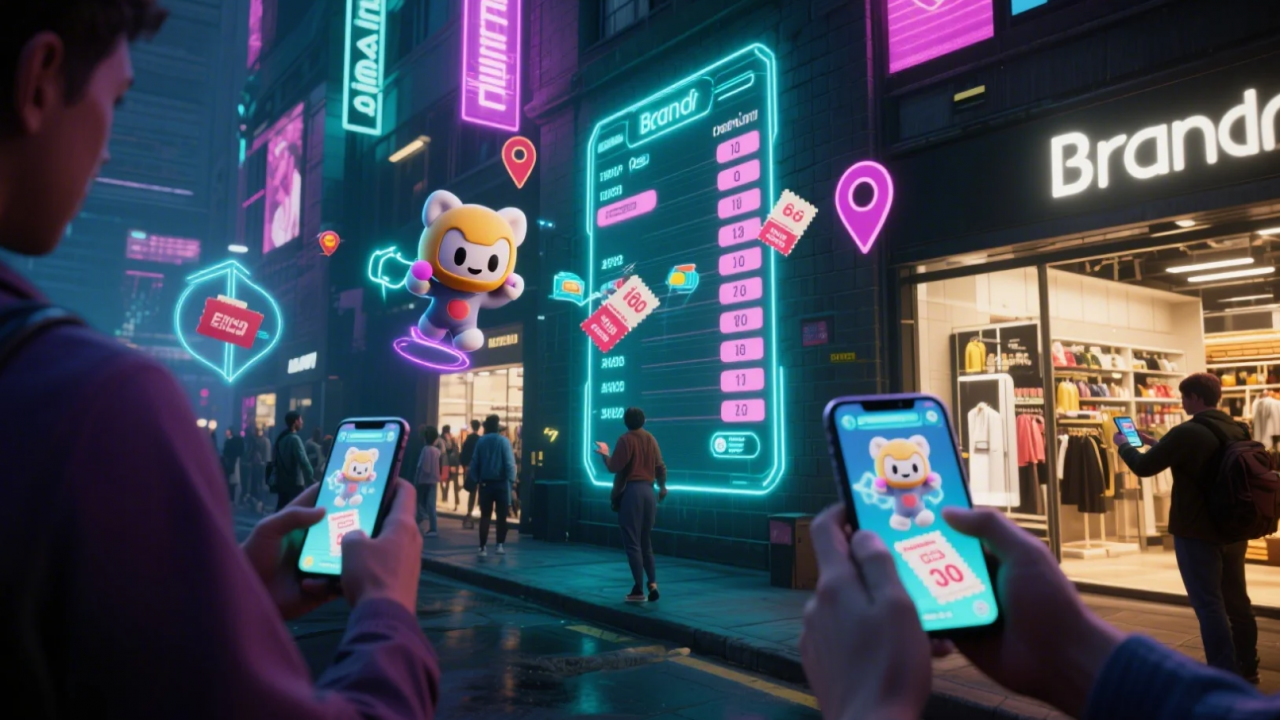Evolution Of AR In The Entertainment And Media Sector Over Time
The augmentation has evolved drastically from the conceptual foundation of Ivan Sutherland’s “Sword of Damocles” in the 1960s to Apple Vision Pro 2024. The meta platforms are becoming more accessible through user-generated AR content. This entity is the integration of mixed reality with media for greater interactivity and immersion. The virtual reality arcades introduced in the 1990s were the first applications of augmented reality in the entertainment industry. Due to hardware limitations, technological advancement halted for a few years until media re-emerged in 2000.
Since Apple introduced Face ID, brand marketing has evolved in the media and entertainment industry. The breakthrough hit heights when built-in cameras were used for reporting and apps like Snapchat and Google Glass were introduced. In 2016, another form of entertainment redefined augmentation integration in the industry with the launch of Pokemon Go. This gaming experience played an important role in the success of AR with mass-market potential.

Top 10 Applications And Use Cases Of AR in the Entertainment Industry
Immersive AR Gaming
After the release of Pokemon Go in 2016, the groundbreaking mobile games advanced in popularity in AR. Minecraft Earth was another real-world environment game enabling players to build structures and explore shared space. The astounding world of Harry Potter was launched as a location-based AR game enabling exploration of the real world with magic.
For example, the integration of AR in gaming made it possible to see Tighnari, the most famous character from Genshin Impact. The 3D experience overlays digital elements, making it look like Tighnari is amongst us. With lifelike visualization, gaming through AR headsets becomes more attractive.
AR In Theatres
Theatres were far from integration until the advent of COVID-19, which prompted many theatres to go online. The reemergence prompted directors from many theatres to integrate augmentation by leveraging immersive technological approaches. Viewers could experience theatre from their phones, VR headsets, and other amenities. Shooting theatres is becoming more fun, and interaction through augmentation is ushering in a revolutionary shift.
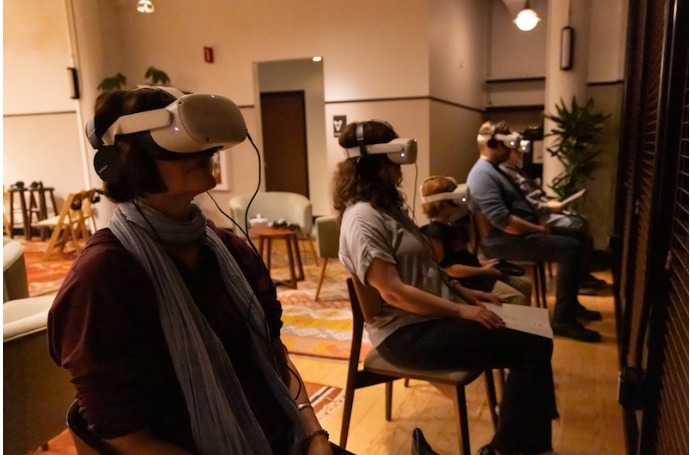
Brú Theatre’s ‘Ar Ais Arís.’ Photo by Ryan Maxwell Photography.
AR In Cinema And Movies
The cinema was included with AR integration. Do you remember the Terminator? Arnie used a built-in augmentation system to measure people’s clothes and whether their hearts were still beating after he wreaked havoc on them. Another example is everyone’s favorite, Jarvis in Iron Man, who integrated Iron Man’s suit with multiple features. Jarvis’s AI computation was integrated with augmentation to unveil the mess network on the battlefield and helped Iron Man understand the technicalities while feeding live data.
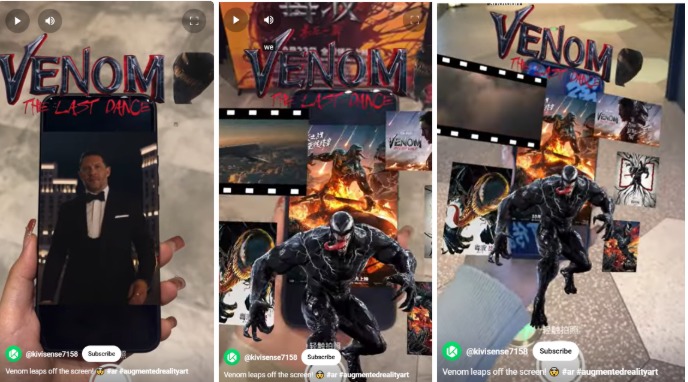
Another example is the venom leaping off the screen after the teaser for Venom 3 was newly released. The three-dimensional rendering of the AR character is filled with multiple elements to create a sense of excitement and urgency among viewers. Since this augmentation is released as a teaser, previous movies are also recommended in this rendering so anyone planning to watch it can prepare themselves.
Concerts And Live Events
Since COVID-19 shut down all prospects of life, augmentation reinvented the idea of concerts and live events. Travis Scott gave an AR performance in Fortnite, igniting an immersive digital experience for users with colorful and dynamic backdrops for a live event in augmentation. Besides that, many live events are planned to enhance audience participation from the ease of their home through interactions with digital versions of artists.
Social Media AR Filters
Snapchat was the first social media app to introduce AR filters. The fun and artistic overlays, combined with the humorous approach of adding characters and animals, redefined the art of augmented reality in social media AR filters. From starting branded campaigns to provoking marketing strategies, influencers used AR-generated filters, sparking attention and fostering creativity and personalization.
For example, DIOR’s enchanting merging of AR at DIOR’s festive flutter with butterfly magic was introduced in the elegance of butterflies. The welcoming of the holiday season in DIOR’s magic gave festive a whimsical experience where users could immerse themselves in digital artistry with luxury.
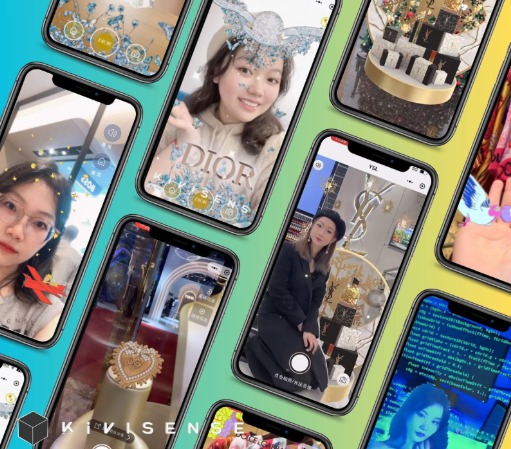
AR Art Exhibitions
The artists are now introducing AR in art exhibitions to move on from traditional art. The marker-based augmentation allows visitors to scan their phones on a code or picture and interact with the art through digital layers. This entity brings art pieces to life through digital elements, including animations, sounds, and recreations.
For example, a tribute to the Polka Dot Queen with Infinite Possibilities is an immersive AR experience inspired by Yayoi Kusama’s iconic art, particularly her “Flowers” series. Users can explore the infinite possibilities of her art by viewing and manipulating digital flowers, patterns, and environments through their devices, bringing her themes of nature, repetition, and boundlessness to life. This fusion of AR technology and Kusama’s artistic genius creates a captivating experience, seamlessly blending the physical and digital worlds.
Sports Events And AR Enhancements
Augmentation is not limited to recreating art exhibitions; it has reached the premier leagues in sports events. Viewers can see a real-time visualization of a player’s sports history, projected shooting angles, and speed. Some apps also show virtual mascots to maintain fan engagement in the stadium. Users can complete challenges and win rewards for entering bigger contests.
For example, the AR application launched by the Paris Olympics 2024 could help users quickly get live updates. Everything is available at a touch, from medal updates to the latest results. To make this experience more entertaining, users can use historical recreations and interactive maps of Parisian landmarks like the Champs-Élysées from Los Angeles, Buenos Aires, Mumbai, or Samarkand.
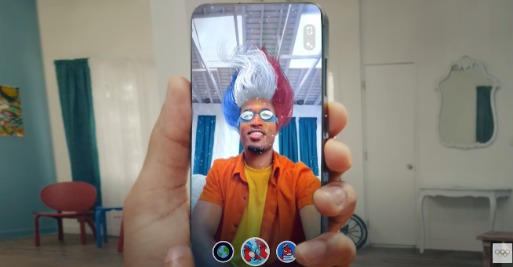
Interactive News Stories And Visualizations
The three-dimensional visualization of important news is an immersive experience. Not only does it create an interesting storytelling experience, but it also enables users to stay updated while increasing engagement. For example, the BBC app launched for augmented reality is a virtual exhibition for iOS and Android. This app exhibits historical knowledge worldwide and visualizes a rotating earth.
Amusement And Theme Parks
Augmentation has undoubtedly changed the experience at amusement and theme parks. Digital overlays into the physical world can enhance any roller coaster experience. Already, those who visit theme parks are expecting a ravishing time. Tailored content based on each ride with unique elements can make it unforgettable. It is fun, and AR-based apps can also navigate with interactive maps.
AR In Marketing And Advertising
The most important marketing strategy is an interactive approach that gives a glimpse of entertainment before the launch. Many media and entertainment businesses use virtual try-ons to exhibit trailers and teasers. This sneak peek creates a sense of urgency, and pre-booking gets sold out in minutes. Some apps even allow characters to interact with users through AR.
For example, to connect with Gen Z, Maybelline NY took marketing and advertising to another level. The brand introduced a new AR and 3D experience by merging beauty with digital elements. This app can be used anywhere through AR filters and wins rewards by completing challenges.
Benefits Of AR In Entertainment To Enhance User Experience
Enhanced User Engagement And Interactivity
With augmentation incorporated into media and entertainment, the overlays of graphic and immersive experiences attract a larger audience. This entity fosters more revenue for movies and cinemas, providing a significant experience and increased interactivity.
New Revenue Streams For Creators And Brands
The media industry is trying to improve how audiences buy tickets and view movies. Overlaying graphics has improved the effectiveness of augmentation in various endeavors. Many creators and brands have developed new revenue streams through exemplary demonstrations of objects in the real world. Besides that, AR ticketing solutions in media are improving by letting users browse showtimes and select seats. This entity adds value and increases the revenue stream.
Improved Storytelling And Immersive Experiences
For enhanced narrative engagement, the storytellers are starting to push the boundaries of traditional narrative. The layered approach uncovers plotlines and helps viewers experience characters in a deeper and more meaningful way than conventional media.
What Is The Future Of AR In The Entertainment And Media Sector?
When physical and digital interaction blend, personalization advances the entertainment and media sector, this tailored content integrates augmentation with a focus on accessibility.
Augmentation has evolved the world of media by introducing an immersive experience. Some movie theatres offer a three-dimensional experience and soon turn the glasses into complete headsets. This interactive experience enhances the music industry by allowing users to listen to songs from multiple sounds.
AR has enabled real-time adaptation based on user input with dynamic content delivery, revolutionizing the future of entertainment. Immersive cinema and theatre with AR-based headsets will provide even more immersive interactions.
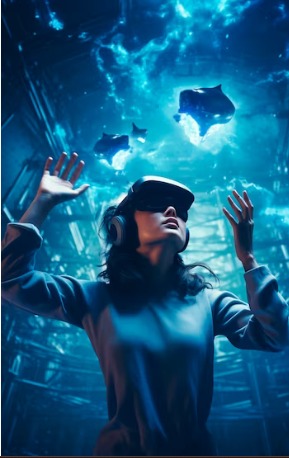
Source: FreePik
Conclusion
Everything is getting augmented, from immersive gaming experiences in the entertainment industry to interactive news story visualization. The extended narratives promote AR-powered platforms like Snapchat for branded content and characters while bringing art to life. Kivisense is a successful try-on business that helps users explore augmentation possibilities with headsets. From fashion try-ons to interactive shop experiences, this business offers everything in one place. Contact us now.


